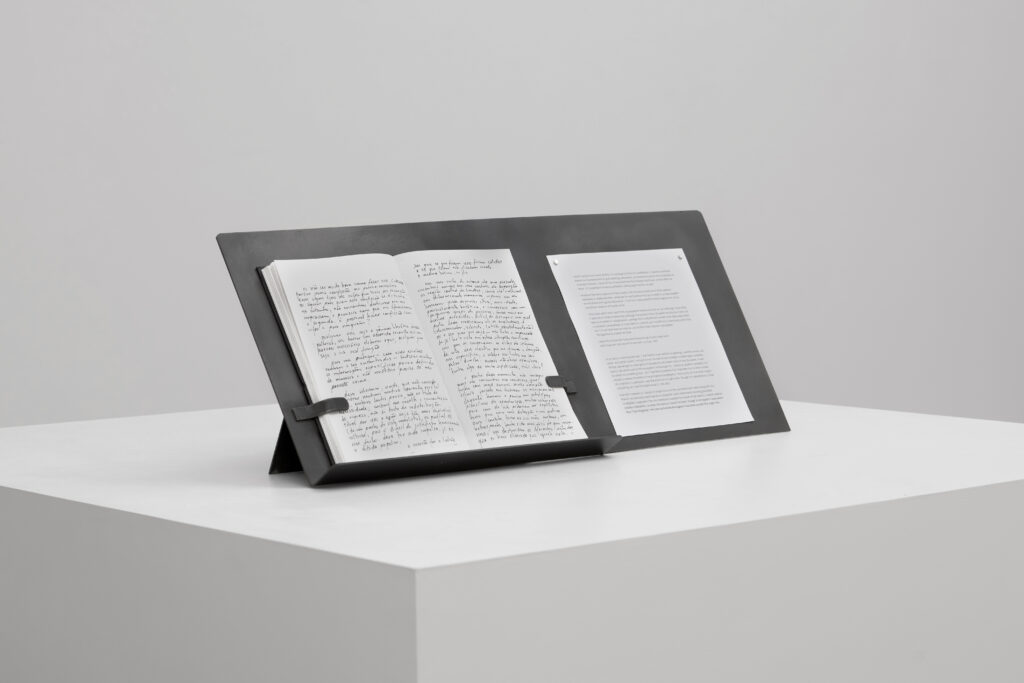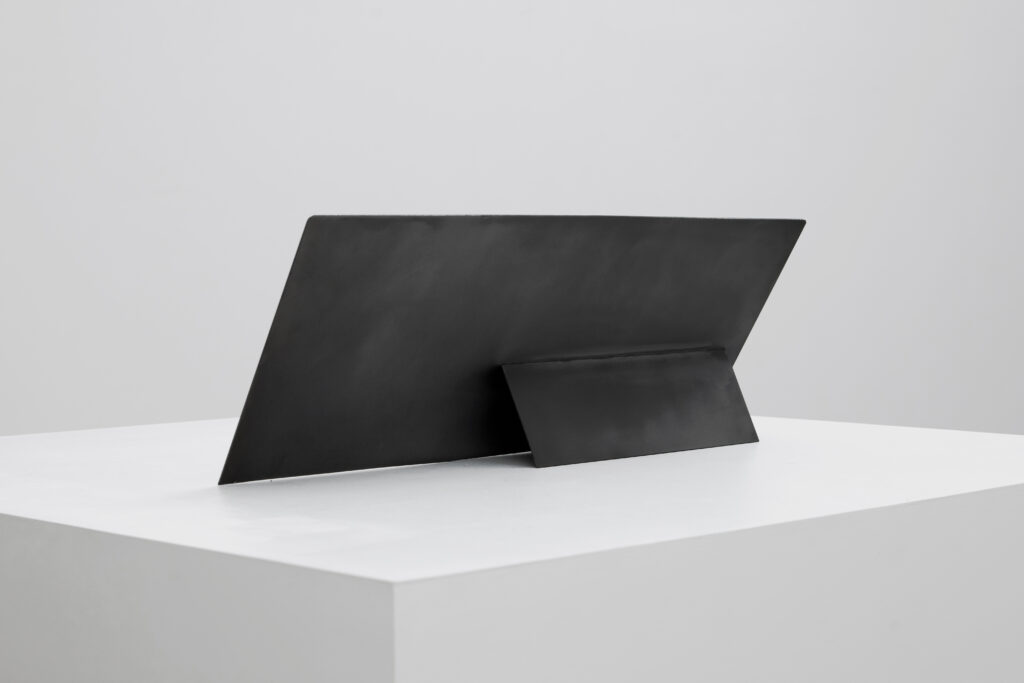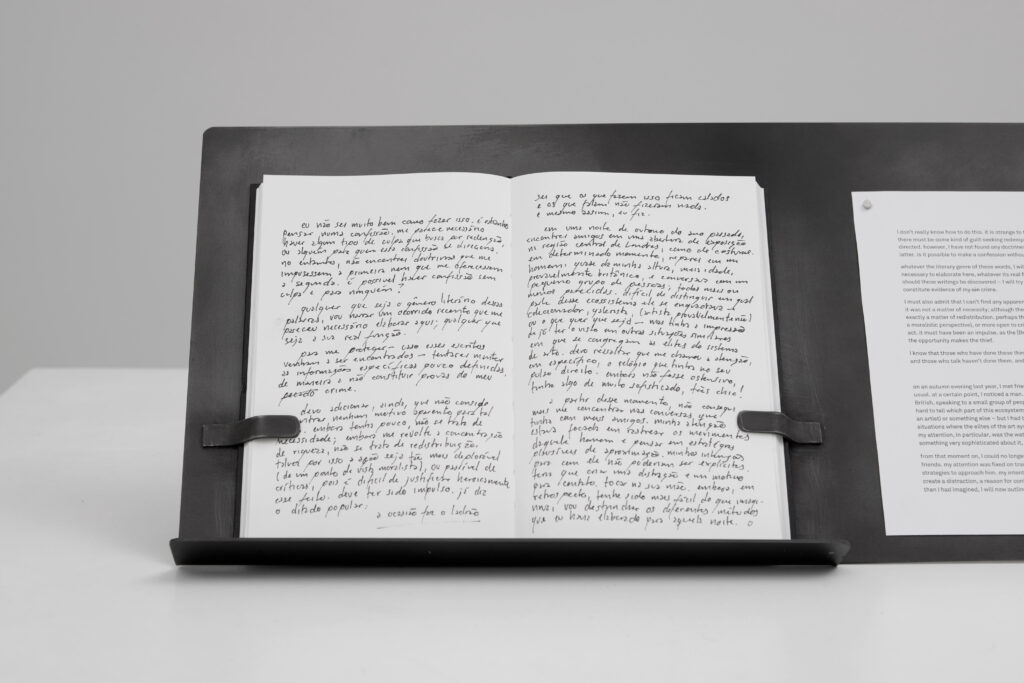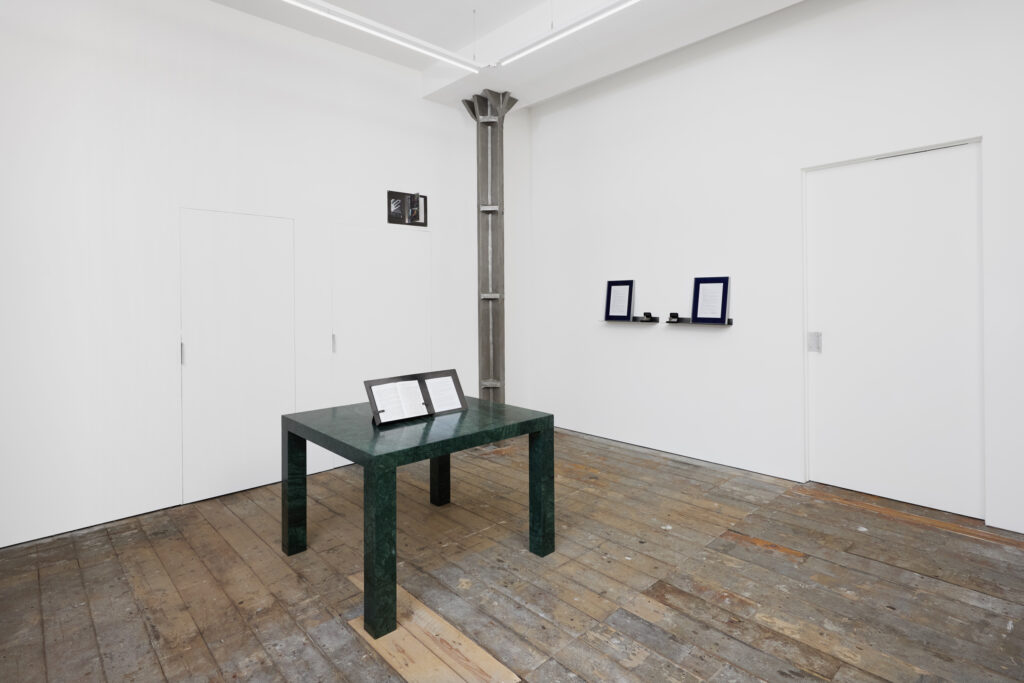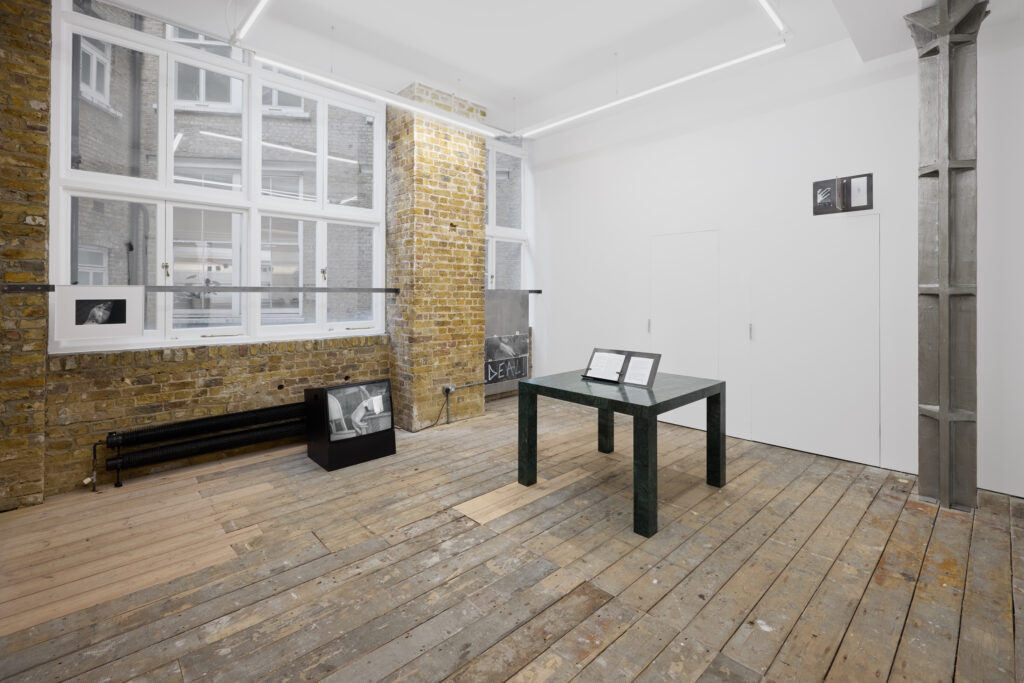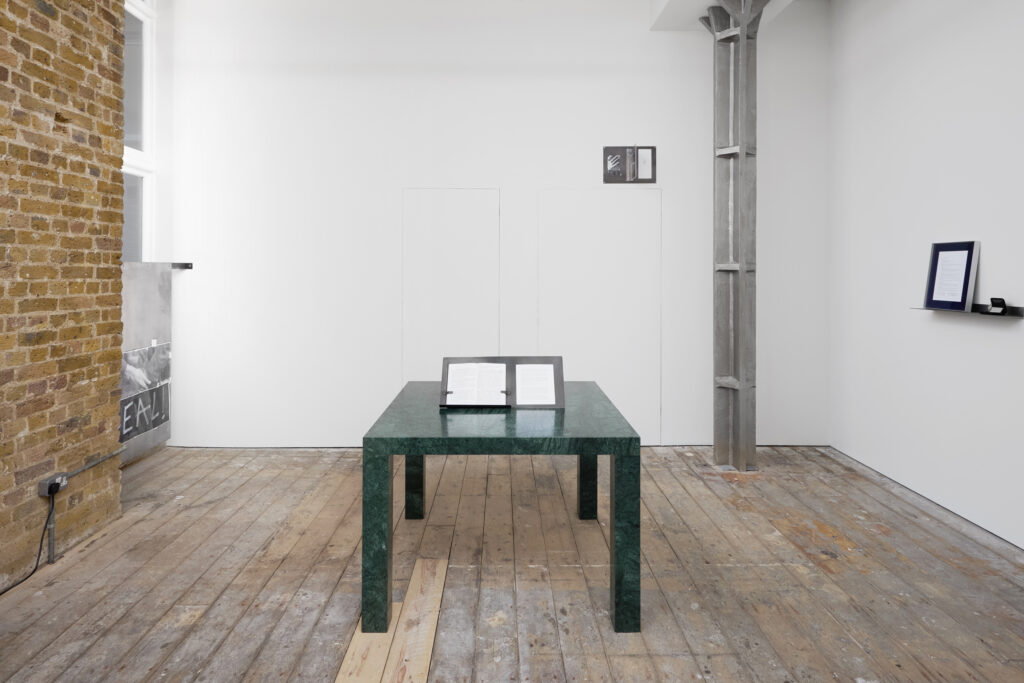Confession, 2025
Notebook, inkjet print on paper, steel
24 x 60 x 16 cm
installation views from “A CRIME, A CONFESSION AND A TRADE” at Nicoletti (London, 2025)
a steel stand holds a notebook with a handwritten confession in portuguese and a printed translation in english. “confession” starts from a double interest that steams from Robert Bresson’s “Pickpocket”: (I) the idea of pairing the apparent crude honesty of the confession with “parafictions” and (II) to think about confession as a genre. the film follows the protagonist in an (failed) attempt to narrate a coherent confession. the lack of motivation to both commit the crimes and to write a confession is accompanied by a breakdown in causality. stealing a specific line from the film that reads “Je sais que d’habitude les gens qui ont fait ces choses se taisent ou que ceux qui en parlent ne les ont pas faites et pourtant je les ai faites” the confession by the artist presents a scene of a crime committed during a social event.
the text starts – as it is recurrent in the tradition of confessions – with an existential questioning of the structure of confessions and its relation with doctrines, basically posing the question about the possibility of a confession without a religious background.
further on, the description of the situation has subtle suggestions of an almost erotic attraction between the one who is about to steal and the target when they say “devising plausible strategies to approach him. my intentions towards him could not be explicit, I would need to create a distraction, a reason for contact. touch his hand.”.
if the film is overall echoing Fyodor Dostoyevsky’s Crime and Punishment (1866), the genre of confessions brings other intertextual relations with Saint Augustine and Leo Tolstoy.
